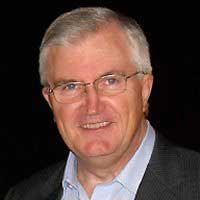John Swainston writes: I have just returned from six weeks on the road as an amateur enthusiast photographer. I shot over 14,000 frames with my excellent new Nikon D750 (brilliant), and three Tamron lenses which were equally brilliant. I also used my iPhone for at least 300 images.
 I witnessed the current photo habits of literally thousands of picture and video makers in the top tourist spots of London and Paris, and many other tourist venues in England and France. What people are doing with their picture-making today is what any future industry association for retailers must ultimately serve, as must the retailers themselves. We need to focus on what’s different and better today for consumers. It’s not your mother’s photo association. It’s not your grandad’s camera industry.
I witnessed the current photo habits of literally thousands of picture and video makers in the top tourist spots of London and Paris, and many other tourist venues in England and France. What people are doing with their picture-making today is what any future industry association for retailers must ultimately serve, as must the retailers themselves. We need to focus on what’s different and better today for consumers. It’s not your mother’s photo association. It’s not your grandad’s camera industry.
In last week’s editorial Keith Shipton suggested up to 20 small photo retailers had closed their doors this year. Not news, it’s the way it’s been for a decade. In the USA the new PMA core is gradually defining what it thinks it will be doing in the future under Georgia McCabe’s new leadership. Meanwhile PRO and IPI in North America, Camera House in Australia and Ringfoto in Germany continue to provide quasi-association services for members of independently-owned photo specialty organisations.

No one serves the needs of the much larger CE retailers, who provide all they need for themselves out of their own resources. While we in Australia might like it otherwise, if a new PMA is to arise, it will have to look after its own back garden first in the US. So what we need to do in Australia is define and implement a plan within the limits of our own resources, and do so making sure we are relevant to a new list of retailer’s needs. We will have to do it without any significant income short-term.

Last week I had an interesting chat in London with Jay Patel. He’s owned the Seen Kodak Express Digital Solutions store in South Kensington in London for the past 15 or so years. (His son Shiv is actually in Australia on a gap year, keen to learn and work for a progressive photo retailer. Shiv is in Sydney now. Let me know if you have an opportunity.) Knowing his dad, who I’ve chatted with several times over the past 10-12 years, here is a person set on making his future in photography retail. Why? Because their family business has cut out a distinct niche of supplying high quality custom fitted frames, helping digitize people’s slides and prints, continuing to process and print film (yes it’s growing again there.) and taking all the labour and organisation out of the problems consumers think exist in doing all this for themselves.
He does not sell hardware. This business model will no doubt resonate with Alan Logue in Adelaide! As a small business in the same location for nearly 15 years, Seen Kodak Express in London works very hard at building relationships, serving the itinerant tourist traveller market (discs, backups of cards, etc) and backing his output with a strong assurance of quality and accountability that a local small business can deliver.

That observation is for me the crux of what is needed for the future when it comes to thinking about a new Australian organisation to serve the broader association needs of retailers involved in imaging. No one model of retail will work. That’s because there is no one model of photographer. I saw people snapping away with their selfie-sticks (increasingly banned in venues like Versailles and the Louvre in France.) They had purchased them for $13 from street-vendors around every major tourist venue, not retailers or online.
Others were using their tablets, converting pictures to Instagram and uploading on locally-procured SIM cards that can be obtained for $30 for a month of phone calls and 3GB of data. Other members of the same families or groups had interchangeable lens cameras. I saw more of these than I did compact P&S cameras. But…very few of them had camera bags or apparently anything other than the kit zoom supplied. No flashguns; a handful of tripods. So even the enthusiast photographer is going for a lighter, smaller kit. CSC cameras dominated interchangeable models. In most cases sharing via hotel Wi-Fi upload to Facebook or Instagram will be the destination of these images, many soon to be forgotten. A tiny percentage will go on to compile photo books at their local drug or CE store.
That’s where 90 percent of today’s photographers are. Photo retailers per se are probably serving less than 10 percent of the total market today. CE stores much more, – because they have phone and tablet and display. Forty-five years ago, when I started, photo retailers served over 50 percent of potential consumers, the balance being pharmacy, department store and duty free outlets. Because of film processing, there were at least four ongoing contact opportunities a year. With digital we don’t have that automatic link back to the consumer. So again the business of attracting and then getting repeat business is different, and there are as yet few major cash generators in this brave new world.
What services and support network will work in such a world? How to get this back to being a growth industry again?
In the next 10 years over 1.4 million Australians will retire (Source: ABS). That’s 750,000 households or more. That group requires a retail service provider to re-purpose their existing inventory of pictures ready for their offspring. Education for retailers on how to build relationships and market connection here is needed.
Another kind of retail idea-sharing is needed for photo makers on iPhones or Samsung/LG/Sony etc… who don’t yet know how to migrate their increasing skill into either a hobby or better pictures. Or how to make a quality big print, or compile a simple photo book of over 50 pages in under an hour.
And a third business model again is needed for that 2-3 percent of the population that’s either into photography as a business (7,000-10,000 people!); or as enthusiasts (900,000 people or 10 percent of homes). Each segment will require skills enhancement, training assistance, legislative support and working groups working as volunteers (just as the AIPP does with member professionals at its core, along with salaried administration, who number just 6 people.)
Does Australia need a big new organisation? No, is the short answer. In any case given the small number of potential members it can’t afford it. Does it need a forum for exchange of ideas assisted with some professional expertise? Yes – and modern media technology provides the answer to most of those needs.
Do we even need the USA PMA connection? Probably not essential, but desirable. But major retail groups should be connecting with their UK, German, Japanese and Asian counterparts. A global marketing organisation should serve that. But does it have to be a US one when the US is just 20 percent of world photo business today? No. But if they are doing the same things and we can benefit from that leverage, then so much the better, just as IPI membership benefits both the parent organisation and the local attendees from Australia in that specific field of image services.
John Swainston can be contacted by email at ozjohns849@gmail.com . See his periodic blog at http://johnswainston.com.





John, now you are retired you may do something with those 14.000 shots, most wouldn’t!
As far as an association goes I would join PMA again if it had something to offer this side of the pond. The networking is the biggest loss we just need some smart supplier to be the conduit for a user pays event or two.